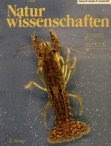 Martin P, Kohlmann K & Scholtz G. 2007. The parthenogenetic Marmorkrebs (marbled crayfish) produces genetically uniform offspring. Naturwissenschaften 94(10): 843-846. http://dx.doi.org/10.1007/s00114-007-0260-0
Martin P, Kohlmann K & Scholtz G. 2007. The parthenogenetic Marmorkrebs (marbled crayfish) produces genetically uniform offspring. Naturwissenschaften 94(10): 843-846. http://dx.doi.org/10.1007/s00114-007-0260-0Abstract
Genetically identical animals are very much in demand as laboratory objects because they allow conclusions about environmental and epigenetic effects on development, structures, and behavior. Furthermore, questions about the relative fitness of various genotypes can be addressed. However, genetically identical animals are relatively rare, in particular, organisms that combine a high reproduction rate and a complex organization. Based on its exclusively parthenogenetic reproduction mode, it has been suggested that the Marmorkrebs (Crustacea, Decapoda, Astacida), a recently discovered crayfish, is an excellent candidate for research addressing the aforementioned questions. However, until now, a study using molecular markers that clearly proves the genetic uniformity of the offspring has been lacking. Here, with this first molecular study, we show that this crayfish indeed produces genetically uniform clones. We tested this with 19 related individuals of various generations of a Marmorkrebs population by means of six different microsatellite markers. We found that all examined specimens were identical in their allelic composition. Furthermore, half of the analyzed loci were heterozygous. These results and the absence of meioses in previous histological studies of the ovaries lead us to conclude the Marmorkrebs propagates apomictically. Thus, a genetically uniform organism with complex morphology, development, and behavior is now available for various laboratory studies.
Keywords: microsatellites • apomictic reproduction • clonal model organism






No comments:
Post a Comment